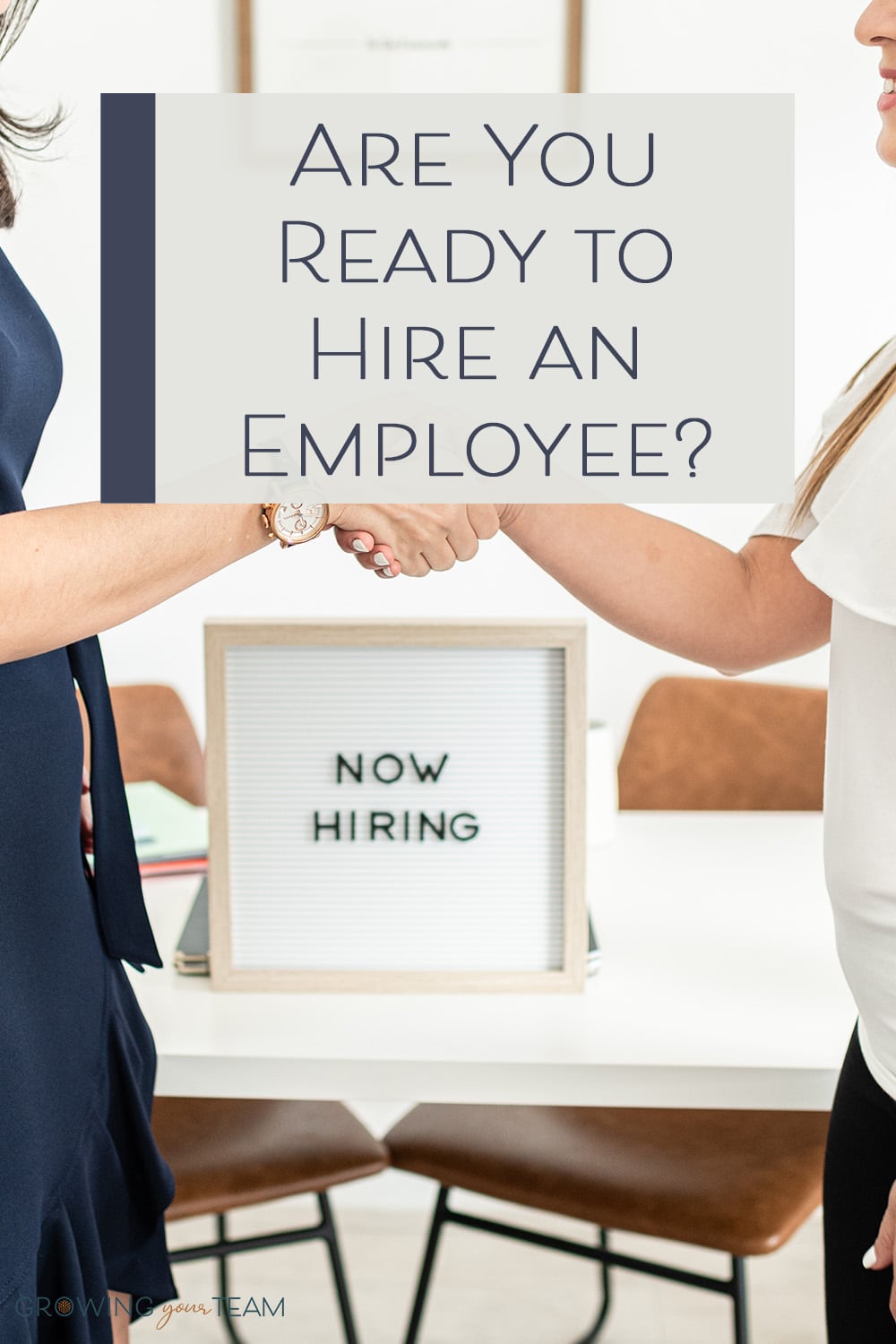Are You Ready to Hire an Employee?
As a founder, there isn’t much that is more exciting than seeing your business grow. As more and more happy clients join the roster, you can begin to expand your team to support this growth by hiring an employee.
You may already know that hiring an employee is the next move for your business, but are you ready for this exciting step?
Before you hit ‘publish’ on that job posting, ask yourself the four questions we’ve listed below. If you can answer “yes” to all four, you’re ready to hire your new employee.
Are you ready to hire an employee? Ask yourself these question.
1) Can you afford an employee
Now that you’ve been running your business for some time, you will be very familiar with the need to weigh up the cost versus benefit ratio of investments. A new hire is just the same, although different types of roles will affect your bottom-line differently.
Some roles, such as in sales or marketing, generate revenue directly. Other positions generate revenue indirectly. This means that the team member does work that relieves a more experienced team member of tasks so that they can focus on revenue-generating tasks.
Even though every position will help generate revenue for the company long term, they will require an initial outlay before that revenue boost will happen. This is because your new team member will need to be trained in how to perform their duties and time to get into a productive flow with their work. If they are relieving others of work, those more experienced team members may need some time to fully transition to the revenue-generating tasks they will now be focusing on.
To understand whether your business can financially support a new hire, check to see whether you could pay their wages for a minimum of three months on your current revenue or business savings. If it is possible, then you can afford the new hire.
If it would not be possible, your business isn’t quite ready for this next step. To change this, focus on how you could cut costs or improve efficiency to free up additional funds in the short term to allow you to reach that higher level of revenue by hiring your new team member.
2) Is the position worth the cost?
This question is about the long-term revenue potential versus the cost of your new hire.
To answer it, you need to work out how much revenue can be generated as a result of this new hire. Does it exceed the amount you will need to pay them in wages?
For example, if the position you are hiring for costs $50,000 a year but has the potential to bring in $75,000 in revenue, you know that the position is worth the cost because you will have increased your revenue by more than the cost of the new team member.
However, if this is reversed and a $75,000 per year position would only generate $50,000 worth of revenue, your cash flow will be in the negative after you have hired your new team member.
If this is the case for you, you could be focusing on the wrong area of the business with your hiring strategy. It might be beneficial to check whether there are any different roles that you could hire instead that would be more beneficial to your company’s revenue. Additionally, you could research similar roles in your industry, so that you can be sure you are offering a competitive rate that is appropriate for the role.
3) Can you write a job description?
This seems like a very obvious step, but you would be surprised how difficult it can be to write a job description if you haven’t prepared properly!
Before you can hire a new team member, you need to clearly define the position’s roles and responsibilities. How will they fit into the existing structure, who will they report to, and how will you measure the success of the role?
Additionally, you need to decide on the sort of person you are looking for. What are their values, what skills should they have, and how much previous experience is required?
Clearly defining the role you are hiring for is one of the three first steps to growing your team. If you’re struggling to do this, read more about it in our blog Hiring for the First Time? Make Sure You Begin with These Three Steps!
4) Is there consistent work?
The final question to ask yourself is this: do you have a consistent amount of work for the new role?
Understanding this will tell you whether you need an employee or whether a contractor might be a more appropriate person to work with.
If you can guarantee an average number of working hours per week or per month, an employee will be a great choice. However, if the work is likely to ebb and flow, or if the work has a defined start and end date, you are probably not ready for an employee. Instead, this could be the perfect opportunity to bring in a contractor.
Want to learn more about our step-by-step hiring process?
If you answered yes to all four questions: Congratulations! You’re ready to hire your first or next employee.
Now you need to start looking for the perfect person to grow your team and your business. This can be a complex and daunting process, but we’re here to help you hire like a pro.
Learn how to master the art of hiring and create a process that not only leads you to a pool of your ideal candidates but also points you directly to the person you should hire by downloading your copy of The Hiring Checklist: How to Hire the Right Team for Your Growing Business.

